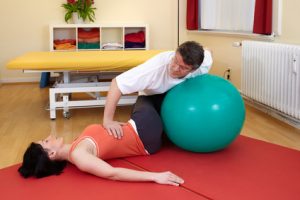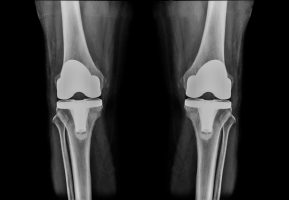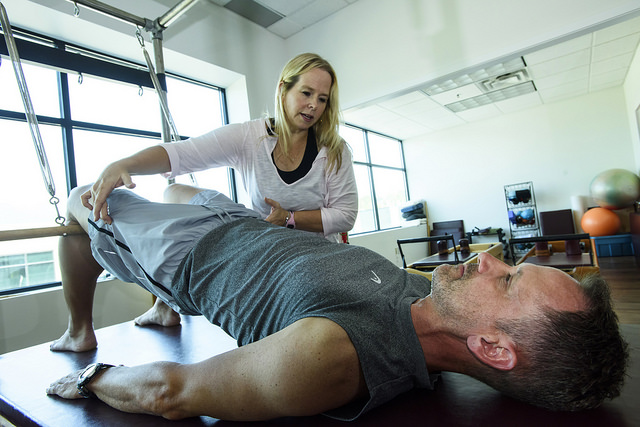 Movement training involves working on the way in which any given movement is performed, with a view to achieving more fluidity, better function, reducing pain or improving performance. Typically, attention is paid to the sequencing of an entire movement, to evaluate what is working well and where the body might be “cheating” to achieve desired results. In a movement training program, new patterning is developed to support balanced strength and mobility, range of motion and efficiency. This kind of training is as much about the brain as the body. It probably won’t involve the same kind of muscular intensity and sweat equity that ” fitness” or “strength” training is known for. But it is equally important. Good movement patterning is the foundation for your fitness, mobility and performance. Without it, all those things suffer.
Movement training involves working on the way in which any given movement is performed, with a view to achieving more fluidity, better function, reducing pain or improving performance. Typically, attention is paid to the sequencing of an entire movement, to evaluate what is working well and where the body might be “cheating” to achieve desired results. In a movement training program, new patterning is developed to support balanced strength and mobility, range of motion and efficiency. This kind of training is as much about the brain as the body. It probably won’t involve the same kind of muscular intensity and sweat equity that ” fitness” or “strength” training is known for. But it is equally important. Good movement patterning is the foundation for your fitness, mobility and performance. Without it, all those things suffer.
So, who does this “movement training” stuff anyway? Right now, I’ll bet you’re thinking it’s just for elite athletes looking to gain that extra competitive edge. Or maybe you’re thinking it’s for rehabilitating injuries? If either of those popped to mind, you’d be partly right. Maybe you’re also thinking that this kind of training has no value for the average person; who just wants to be fit enough to promote health and enjoy the side-benefits of looking and feeling good? And that’s where you’d be WRONG.
In a world where most people are barely able to achieve the minimum daily recommendations for “fitness;” in a world where most people are sitting for way too many hours of every day; and in world that has, in the last few years, become drawn to “extreme” fitness regimes – trying to achieve extraordinary results in record time; the average person needs movement training now more than ever.
In our desire to be “fit” – which for many people just means feeling strong and keeping the weight down, we’ve forgotten that the only way to get fit is to MOVE! The movements that most people choose to get fit are typically performed in a fairly small range of motion again, and again and again. There’s lots of flexing and crunching going on – all of which tend to compress the body over time, if nothing is done to counteract that force. In our efficient and tech-savvy world, the movements that our parents and grandparents had to do DAILY have virtually been eliminated from our modern movement vocabulary. The kinds of movements that our parents and grandparents did as part of an ordinary day gave them practice and strength in moving their bodies in all kinds of ways. We don’t get much varied movement practice. Moving fully and completely in the modern world takes an active choice.
You’ve heard the old adage, “move it or lose it?” I’d like to amend it to “move it WELL or lose it.” Because as you fail to practice moving well and fully on a regular basis, you lose the ability to move well at all. Hit your crossfit gym after a day at the office (year after year), and you may be able to get through your WOD’s – but you might start finding your joints complain as you get out of bed in the morning. If you don’t move much beyond walking from the car to the office, you’ll find that just reaching around to pick something up creates aches and pains you probably just chalk up to getting older. Without good movement mechanics, your cardiovascular performance may suffer: because great breathing requires great mechanics. Your overall fitness will be impacted too. Without good motor control – you’ll likely be working harder to achieve less. This might be a great strategy for expending calories – but what exciting about achieving a goal weight if you can’t participate fully and with abandon in the activities you love?

And here’s the kicker: the more you compensate in your movement, the more compensations will accrue – with interest – in your body! It’s exponential. So that “stiff back,” or the osteoarthritis in your hip, or the rotator cuff injury that you thought “just happened” – are more likely the after-effect of years of poorly patterned movement. (In just 5 years, from 2006 – 2011, hospitalizations for hip & knee replacements in Canada went up by 13%, with women more often going bionic than men! These stats are increasing unnecessarily.)
When you can learn to move well, to pattern your movement for the best function of YOUR body, you are more likely to be able to do whatever you love to do – without the aid of surgical intervention, or having to endure discomfort – for many, many years to come. It’s never too late! If you’ve got stuff going on in your body now that you don’t exactly love – look it in the face and deal with it! Create some new movement patterns, build some strength and mobility in neglected parts of your body and you may find that your challenges disappear completely!
In the current fitness environment,the buzz is all about the strength training. Cool. I’m all for it. But please. It’s not “either/or.” If you are truly interested in conditioning your body for a lifetime of enjoying movement (at whatever level of intensity turns you on), you must take the way you move seriously. Make the time. Motor control patterning or movement training is not just for rehab or elite performance. It’s for you. Extend your body’s “shelf-life” – and keep moving strong and happy into old age.
If you’re feeling a little stiffer than you’d like, if your range of motion is declining, if you’re feeling pain when you move, or if you’re choosing not to do specific movements and you tell yourself you’re “getting old,” it’s time to take a closer look at your structural support and movement patterning. Why not book a private assessment with us to find out how much better it’s possible to feel in your body. Movement. It’s what we do. And when you’re ready, we’re here to help.
 When you’re ready… Moving Spirit is ready to help.
When you’re ready… Moving Spirit is ready to help.
